On Dec. 15, 2015 the Truth and Reconciliation Commission of Canada released their final report titled “Honouring the Truth, Reconciling for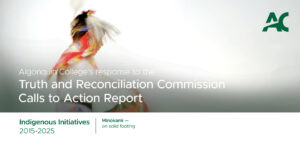 the Future”. The report issued 94 Calls to Action for reconciliation with Indigenous peoples.
the Future”. The report issued 94 Calls to Action for reconciliation with Indigenous peoples.
Algonquin College is proud to reflect on more than a decade of reconciliation efforts inspired by the Truth and Reconciliation Commission’s Calls to Action. Guided by Indigenous voices, the College has introduced programs, services, and partnerships that expand supports for Indigenous learners, integrate Indigenous knowledge into curriculum, and create spaces that honor Indigenous cultures and traditions. A report of our work over the past decade can be read here. Continue reading
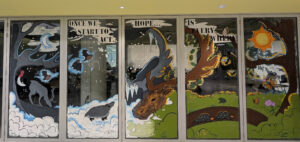
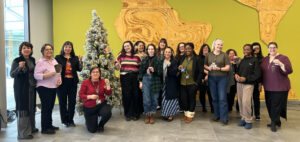 ornament-making workshop.
ornament-making workshop.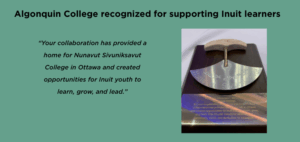 focused education. The award, featuring a traditional ulu (a multi-purpose cutting tool), celebrates NS’s 40th anniversary and recognizes Algonquin College’s partnership role in supporting Inuit learners for more than 35 years.
focused education. The award, featuring a traditional ulu (a multi-purpose cutting tool), celebrates NS’s 40th anniversary and recognizes Algonquin College’s partnership role in supporting Inuit learners for more than 35 years. 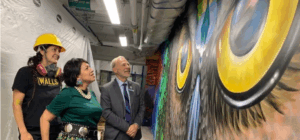 hands-on experience with the same technology they can expect to encounter in the workplace. In addition to the technical side, the Centre is also alive with Indigenous imagery and knowledge.
hands-on experience with the same technology they can expect to encounter in the workplace. In addition to the technical side, the Centre is also alive with Indigenous imagery and knowledge.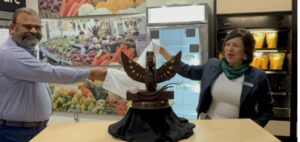 led the creation of a chocolate sculpture with student volunteers. The sculpture, titled “Hope” was inspired by the Algonquin College Coat of Arms.
led the creation of a chocolate sculpture with student volunteers. The sculpture, titled “Hope” was inspired by the Algonquin College Coat of Arms.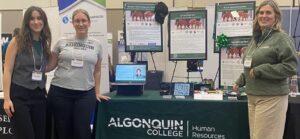 represented Algonquin College at the annual Ottawa Aboriginal Coalition Career Fair, reaffirming our commitment to Indigenous inclusion and community engagement and marks an important step forward in advancing our Indigenous Recruitment Strategic Plan through authentic relationship-building and shared learning.
represented Algonquin College at the annual Ottawa Aboriginal Coalition Career Fair, reaffirming our commitment to Indigenous inclusion and community engagement and marks an important step forward in advancing our Indigenous Recruitment Strategic Plan through authentic relationship-building and shared learning. 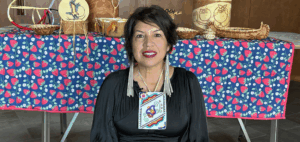
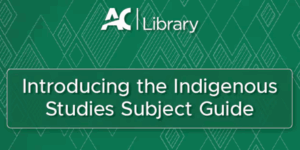 to support both Indigenous and non-Indigenous learners.
to support both Indigenous and non-Indigenous learners.